Is your record player playing too fast or too slow?
Well, you’re not alone.
Inconsistent speed, also known as inconsistent wow and flutter, has become very common, and trust me, this issue won’t let you enjoy your vinyl.
I had been through this problem in my early days in the vinyl world, and I still remember how difficult it became to fix.
After trying and failing multiple times, I finally got help from a professional. He analyzed my record player from many aspects, and within a few minutes, he figured out the problem and told me that my record player’s belt had lost its elasticity, and thus, its grip loosened up on the motor’s drive shaft and platter. The technician immediately replaced the belt, and my turntable started running at perfect speed.
Well, I was saving money to buy the “Kind of Blue” album by Miles Davis, but I used up all that to pay the technician. I was happy that my record player was running perfectly fine, and also sad that the money I was saving to buy the record was gone.
While walking home with the record player in my hand, I suddenly remembered that the technician was checking my record player in different ways to find the exact problem, so there must be more reasons behind the inconsistent speed issues. That curiosity made me do deep research, and after some time, I figured out that there can be multiple reasons why record players have speed problems.
Well, thanks to my curiosity back then, I understood everything a lot better than before, and that 3-4 days of research helped me to fix many technical issues on my or my friend’s turntables.
Today, by sharing my years of experience through this article, I will help you to find the reason behind the inconsistent speed issues at your end, and after that, I will share the solution to fix it.
But, before jumping directly to the solutions, I recommend you first measure the speed of your turntable so that you can get an idea of whether you need to increase the speed or reduce it.
So, let’s get started.
Why is my record player playing too fast or too slow?
Here are the reasons and their possible solutions:
Reason 1: Wrong speed selected
It happened to me. I have fewer 7-inch records and always listen to 33⅓ LPs, so I never change my turntable’s speed to 45RPM. But one day, my brother played a 45 RPM record, and after listening to his album, he placed the record back in its place but didn’t switch the speed back to 33⅓ RPM again.
When I came home and tried listening to my favorite album, my turntable suddenly started sounding like chipmunks. I was surprised at first, but then I quickly noticed the speed switch and fixed the issue at my end. Well, I was very quick to find the issue, but beginners may not be as quick as I was, so I have mentioned this silly mistake as one of the first solutions.
Solution:
Identify the speed at which you should play your vinyl records. For example, 12-inch LPs are meant to be played at 33⅓ RPM, 7-inch singles are meant to be played at 45 RPM, older 10-inch shellac records are meant to be played at 78 RPM, but modern 10-inch vinyl records can be played at 33⅓ RPM too.
Most of the time, the record’s RPM is mentioned on the label itself. Take a quick look at the label to figure out the correct speed to play your vinyl at and select the speed selection switch accordingly.
Reason 2: Speed selection switch
I have seen this problem arise in the suitcase record player frequently. Sometimes, the dirt in the switch won’t let you change the speed properly. Even if you try to do it forcefully, the switch will remain between 33⅓RPM to 45RPM or 45RPM to 78RPM.
Or, the broken switch can cause the record player to play at an unexpected speed.
Solution:
There are two solutions:
1) Clean the switch and lubricate it:
Take a small brush and try to remove the dirt and dust. You can also lubricate the switch, but make sure your record player is not connected to any power outlet.
2) Replace the switch:
If you notice a small rattle in the switch, I recommend replacing it with a new one.
Most of the time, this is the speed switch that is the main culprit, and fixing this one naturally fixes the speed issues.
Reason 3: Incorrect speed calibration (turntable & record player)
Solution:
Some people have turntables while some have record players, so we will share the step-by-step guide to calibrate the speed of both these devices.
And, if you don’t know the difference between a turntable and a record player, then I recommend you check out this article explaining the difference between the record player and the turntable.
Well, some record players come with a pitch control slider, so first, I will share the steps to calibrate the speed using the pitch control slider, and after that, I will share the step-by-step guide to fix the turntable speed without a pitch control slider.
Speed calibration with pitch control slider:
If you have gone through the speed measurement article mentioned at the start of this article, then you should have understood the concept of strobe disks.
Most of the time, the turntable with a pitch control slider has a built-in strobe so if your turntable has an in-built strobe, then you are good to go otherwise, you either need to buy a strobe disk or use the RPM measurement app.
Now, coming to the speed adjustment steps, all you need to do is select the speed you want to calibrate and play with the pitch slider while noticing the strobe dots.
Once the strobe dots seem still while the platter is spinning, leave the pitch switch there, and that’s it, you are done with speed adjustment.
For more details on this, please check the video below:
Speed calibration without pitch control slider:
If your record player doesn’t have a pitch control slider then you need to make some adjustments to the speed adjustment screws on the motor itself to calibrate the speed.
Depending on your unit, you can follow any methods below:
Method 1: For Turntables
The speed calibration of turntables is very easy, and you can do it within a few minutes. The below method will work for almost all turntable brands like Audio Technica, Sony, Fluance, Orbit, Pro-Ject, etc.
Here are the things required:
- 2 tables or cardboard boxes of similar height
- A small and long flat-head screwdriver
Here is the step-by-step guide:
1) Lock your tonearm with its lock and put the stylus guard on if available.
2) Now, take 2 tables of similar height and place the turntable’s left legs on one table and right legs on another, making the bottom part of the turntable accessible.
3) On the bottom of the turntable, you will find two holes marked as 45 and 33. You must have understood their roles by looking at their marking. Well, the 45-marked hole is for adjusting 45 RPM speed while the other one is for adjusting 33⅓ RPM speed.
Well, these holes are made by manufacturers through which you can reach the adjustment screws on the motor easily.
4) Turn on the turntable and put it on the speed you want to calibrate. For example, we are calibrating 33⅓ speed.
5) Now, you can put either a strobe disk on the platter or put your mobile phone with the RPM speed measurement app open.
6) While the turntable is spinning, take the screwdriver and put it inside the hole under the turntable, which represents 33⅓ speed. While putting the screwdriver, you will feel that there is some sort of cushioning so you need to push the screwdriver through that cushion to reach the motor’s speed calibration or adjustment screw.
Increase Speed: Turn the screwdriver clockwise.
Reduce Speed: Turn the screwdriver counterclockwise.
7) While adjusting the speed, keep taking a view of the strobe disk or mobile on the platter
8) Keep making adjustments until you can tap into the correct speed.
That’s it.
Method 2: For Record Players
Here, we are using the Crosley record player as an example, but this method will apply to all record players like Victrola, 1 By One, etc.
Unlike the turntable, you can’t calibrate the speed while checking it side by side because, in record player adjustment, you need to turn it off and unscrew the whole surface, which makes things a little difficult.
So, I recommend you measure the speed first and according to your analytical brain, figure out the exact amount of turns on speed adjustment screws required to achieve the perfect speed.
Well, I know this is a little difficult, but this is the only way.
Now, let’s get into the process:
1) Turn off the record player and unscrew the top surface
2) Now, gently turn the surface upside down while taking care of the wires and circuit.
3) On the bottom of the motor, you will see two holes marked as H and L. The H adjusts 45RPM speed and the L adjusts 33⅓RPM speed.
4) Put the screwdriver in the hole. While putting the screwdriver, you will again feel that there is some sort of cushioning so you need to push the screwdriver through that cushion to reach the motor’s speed calibration or adjustment screw.
Increase Speed: Turn the screwdriver clockwise.
Reduce Speed: Turn the screwdriver counterclockwise.
5) Make the required adjustment, place the surface back into its place, and try checking the speed again with a strobe disk or mobile phone with an RPM monitoring app.
That’s it. You have successfully calibrated the speed of your record player and resolved the record player playing too fast or too slow problem in no time.
Reason 4: Belt Issues
The worn-out belts or improperly installed belts can also cause the record player to play too fast or too slow.
Solution:
Reposition the existing belt or buy a new belt compatible with your turntable model.
Here, a compatible belt is very important because if the belt size is too loose then either the speed of the turntable will be slow or the belt won’t hold its position on the drive shaft. Similarly, if the belt size is too tight then the turntable will play too fast or you won’t be able to adjust the belt on the platter and drive shaft.
You can check these guides through which you can replace turntable belts or replace record player belts.
Reasons 5: Belt Residue On Drive Shaft and Platter (Belt Drive & Idler Drive Turntables):
The belt or idler wheel residue on the drive shaft and platter can also cause speed variations in your record player or turntable.
Like I always told you, everything in this world has a lifespan and so does your belt or idler wheel.
If you keep using the old belt and old Idler drive then it will start breaking apart and the broken pieces start sticking to the drive shaft or the platter which directly affects the speed.
Solution:
The solution is to clean the drive shaft and the inner edges of the platter where the belt or idler wheel comes in contact.
How to Clean The Drive Shaft (Belt & Idler Drive Turntables):
1) Turn off the turntable and remove the platter from the turntable, making the drive shaft visible
2) Remove the belt if using the belt drive turntable or remove the idler wheel if using the idler drive turntable.
3) Turn on the turntable and let the drive shaft spin
4) Use alcohol preps and soft cloth and rub the drive shaft to remove the residue/melted belt or you can take an iron file and start removing the residue built up on the drive shaft while the drive shaft is spinning. Make sure you do it carefully.
5) Keep checking the speed in between by placing the platter so that you know how much more work is left.
That’s it.
How to Clean Platter (Belt & Idler Drive Turntables):
To clean the belt residue or melted belt from the platter, you can use alcohol preps and a soft cloth to rub the residue out.
Softening of Idler Rubber Wheel (Idler Drive Turntable):
You can use a rubber rejuvenator solution to soften the idler rubber wheel.
Reasons 6: Power adapter
If you are using an adapter that is giving less power to the record player than required then the parts of the record player might not work properly.
For example, Your record player needs a 12V adapter to function properly but if you are using a 9V or something below then you are giving less power to the record player and its components won’t function properly.
Solution:
Always use the power adapter which is compatible with your turntable or record player model. You can check the power adapter compatibility with the customer support of the record player’s brand.
Reasons 7: Dirt Issue
Solution:
I recommend you clean the turntable and remove all the dirt at regular intervals.
Reason 8: Lubrication Issue
Solution:
Lubrication is very important which many people take very lightly. You must lubricate all the parts of the turntable like the tonearm mechanism, anti-skate mechanism, motor bearing, and much more to increase the life span of your record player and its parts.
Reason 9: Motor Failure
This one is quite rare, but it could happen to anyone. A motor failure can cause it to run at an unexpected speed.
Well, if none of the solutions mentioned above have worked for you, then the motor can be the culprit.
Solution:
The best solution is to get the motor checked by technicians and get it replaced if it is defective.
So, these are the reasons why your turntable plays too fast or too slow.
This guide will help you solve the turntable or record player playing too fast or too slow problem. If you still have any questions then you can comment below. We will get back to you as soon as possible.

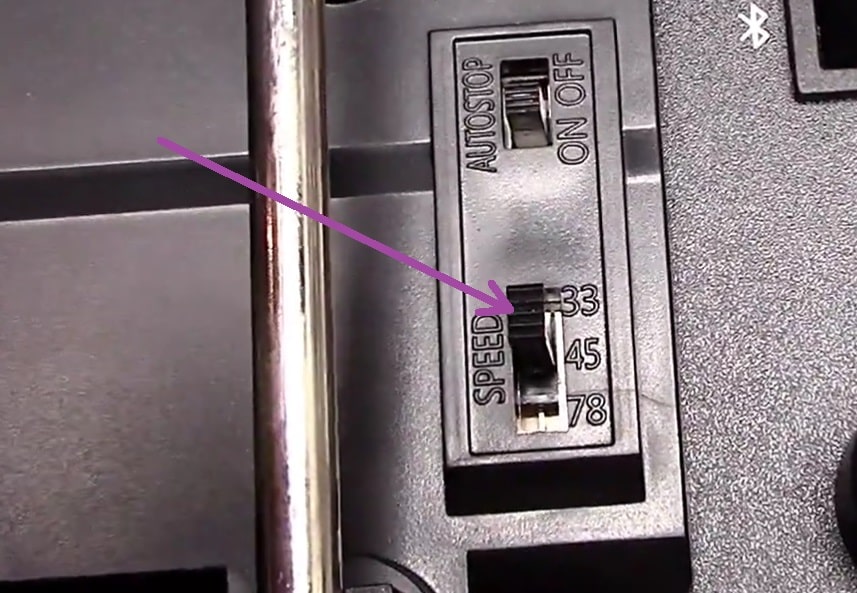
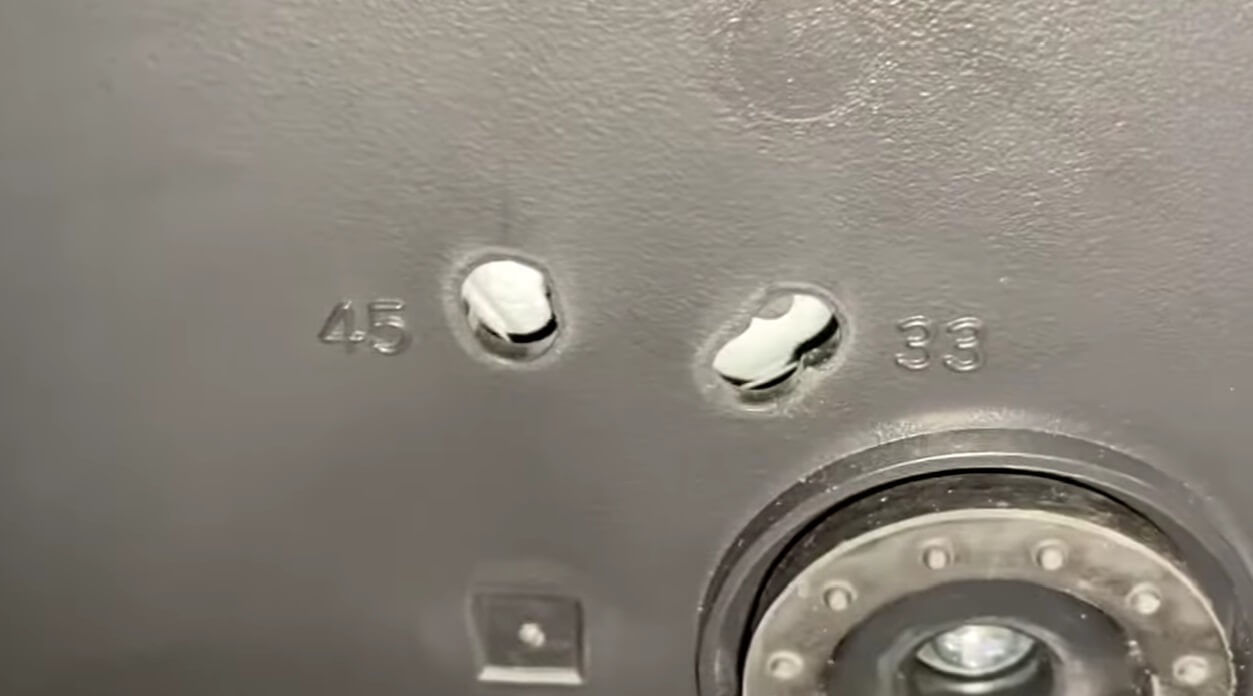
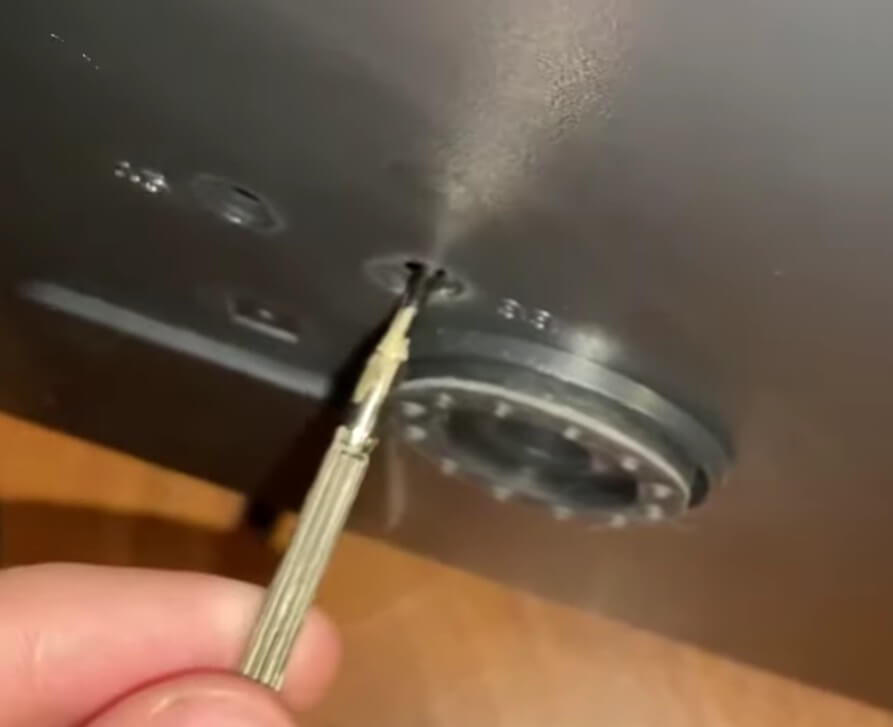
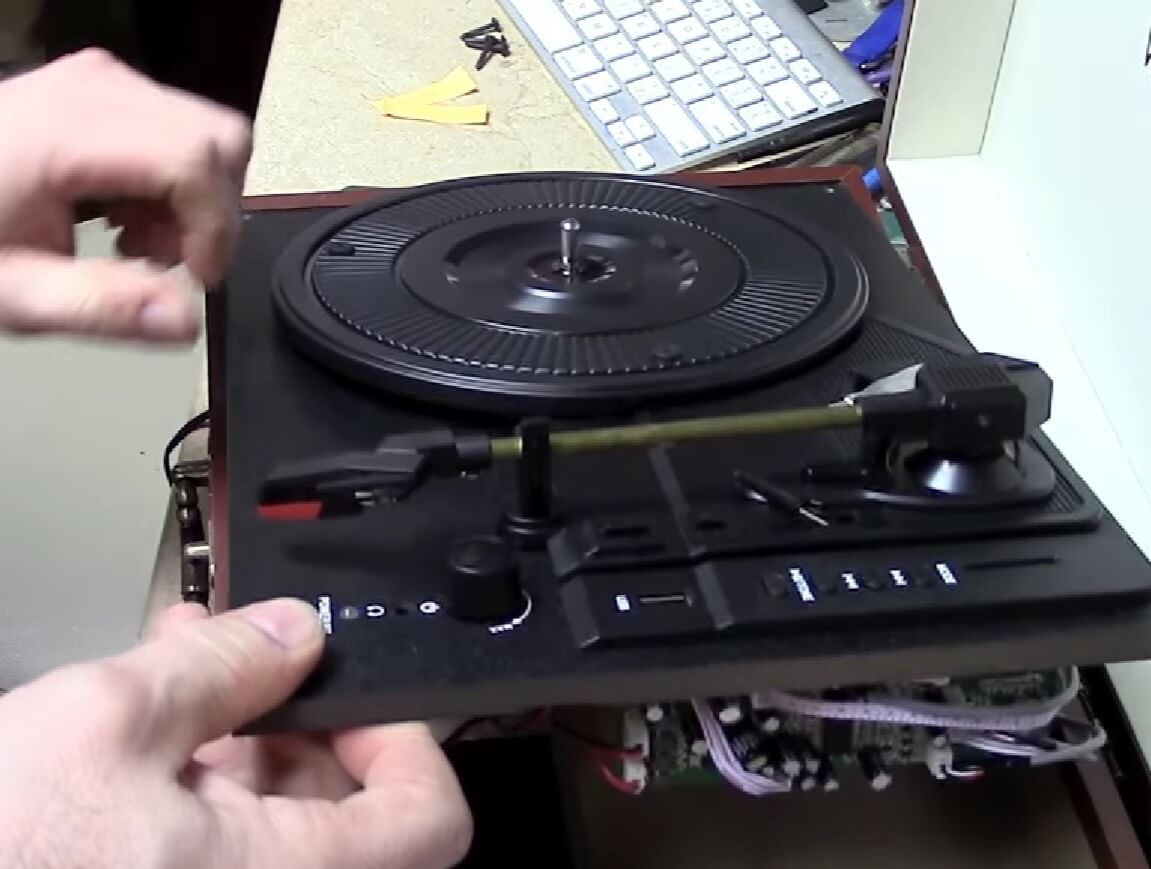
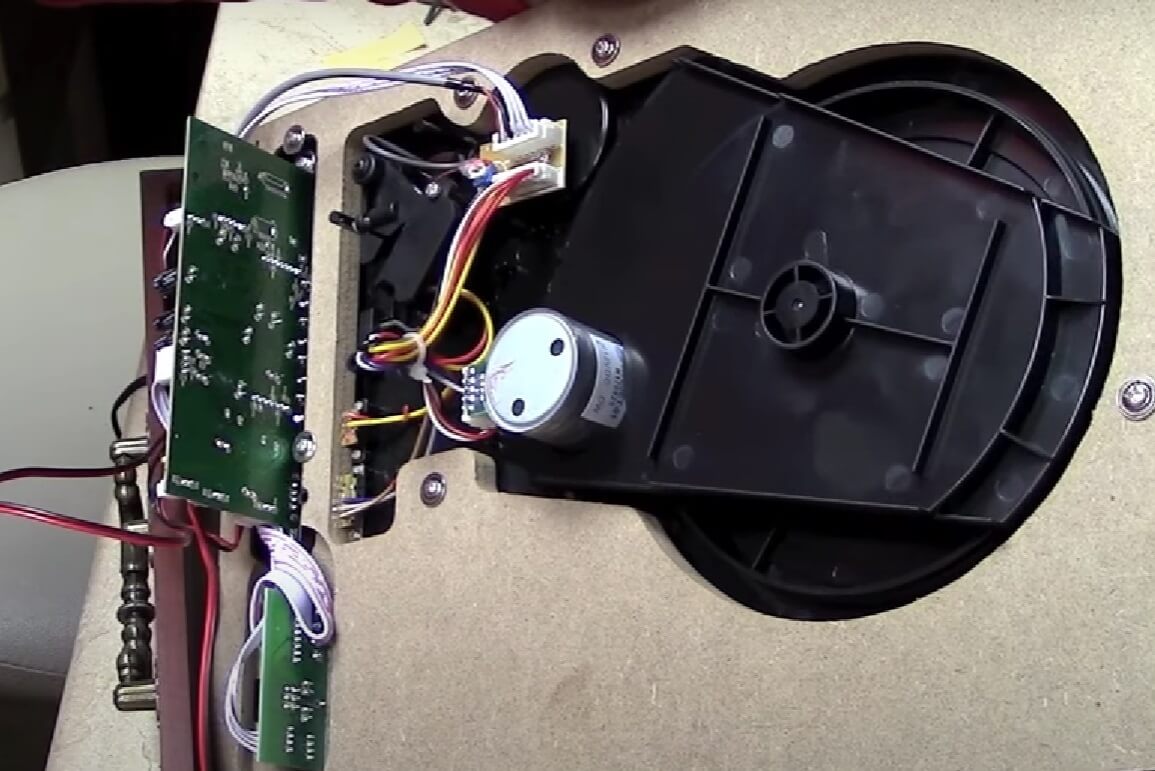
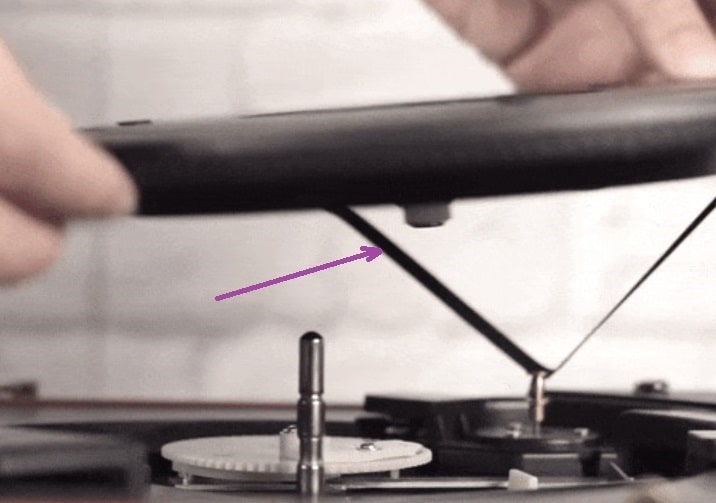
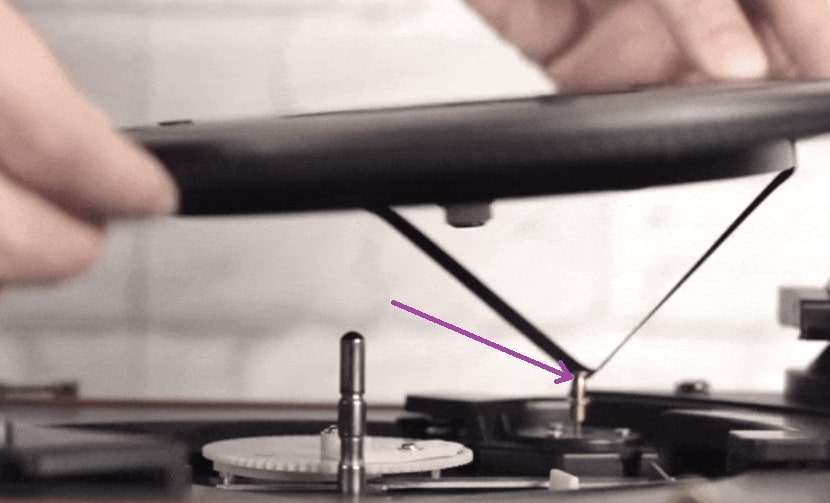
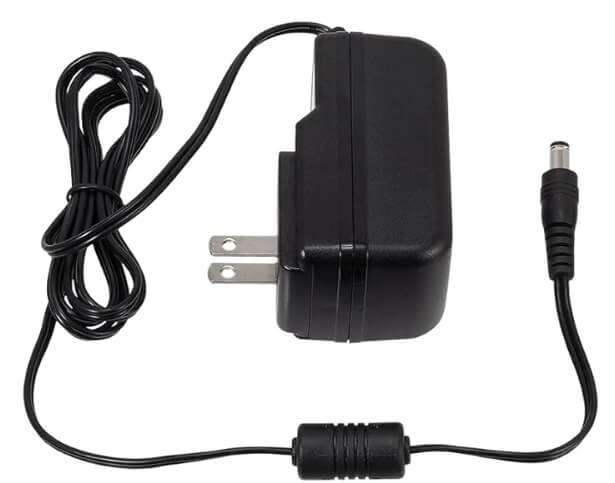


Hello!
I am a beginner in learning and using record players. My record player bought from Japan is a used one, old. The player works well, but the turntable speed light does not light up. I would like you to help me solve this problem. Thank you very much!
Hi Truong Thong,
Does your turntable work fine despite the speed light not lighting up?